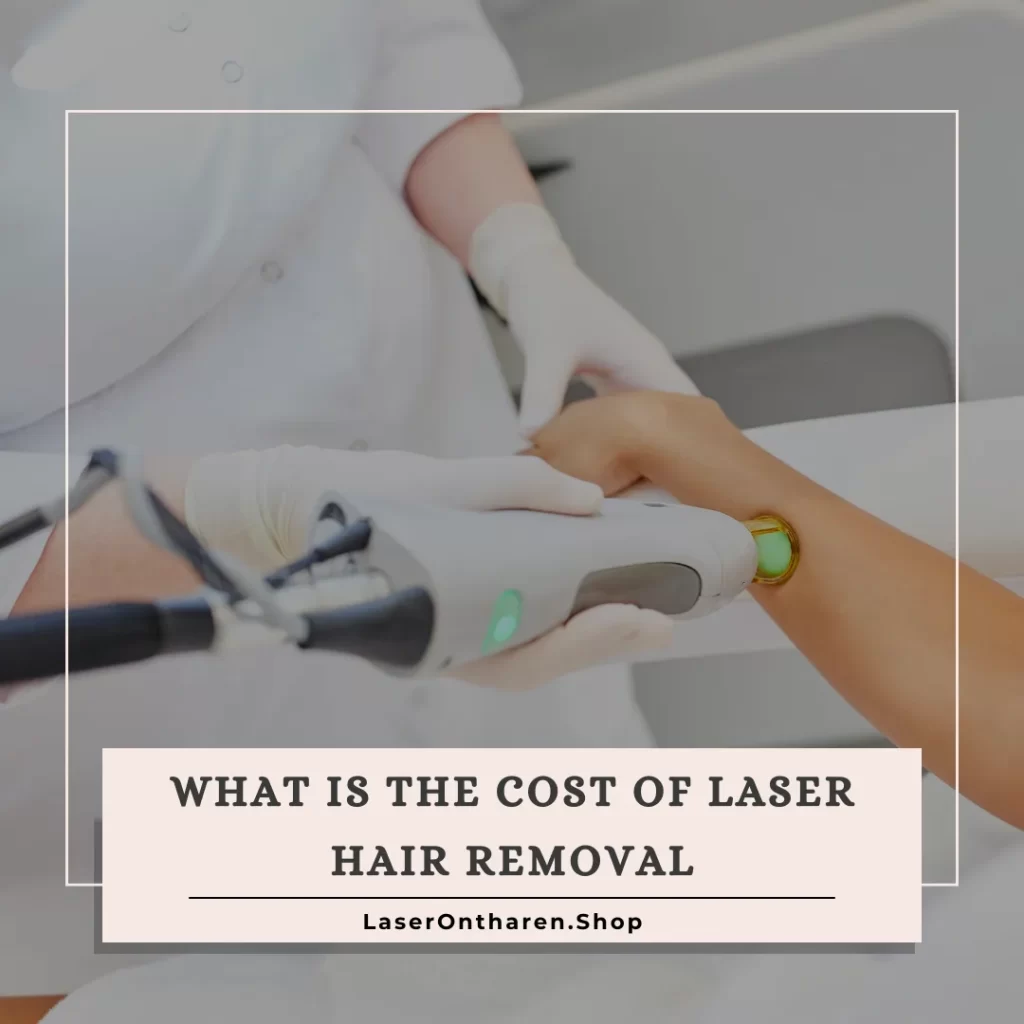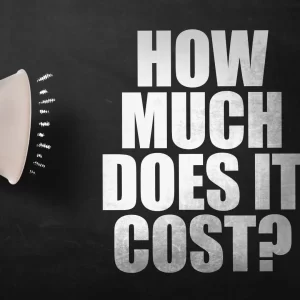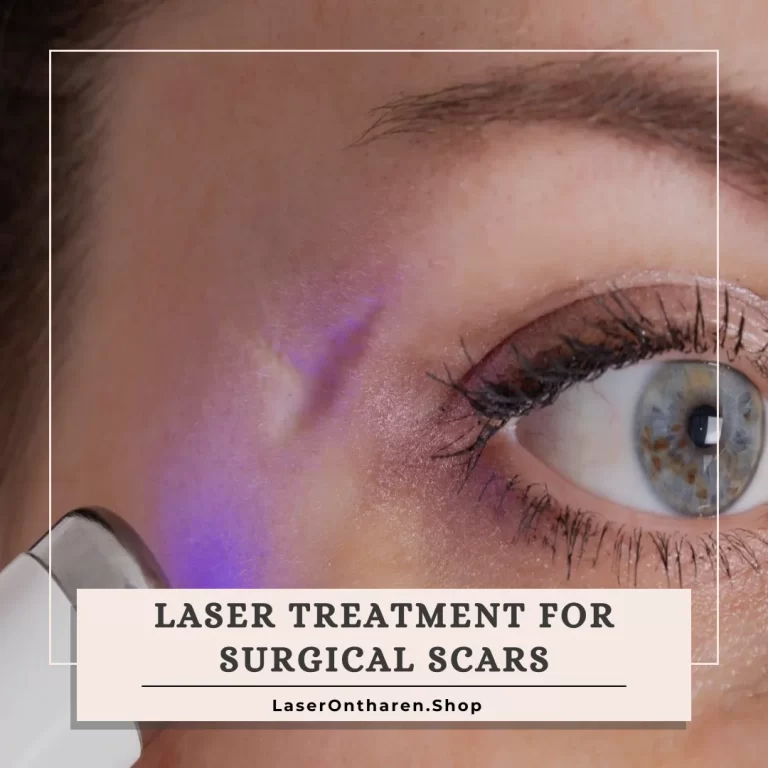Laser hair removal stands out as one of the most sought-after cosmetic procedures for those aiming to reduce unwanted hair with long-term results.
Unlike traditional methods such as shaving or waxing, laser hair removal offers a more permanent solution by using focused light to target and destroy hair follicles.
This procedure has gained popularity for its effectiveness in slowing hair growth, with many people enjoying smoother skin without the constant need for maintenance.
As appealing as it sounds, one of the first questions potential candidates have revolves around the cost of laser hair removal.
Given its cosmetic nature, prices can vary widely based on various factors, including the area being treated, the number of sessions required, the technology used, and the location of the clinic.
Understanding Laser Hair Removal
Laser hair removal has revolutionized the way we approach hair reduction, offering a long-term solution compared to traditional methods like shaving, waxing, or plucking.
This procedure uses a concentrated beam of light (laser) that is targeted at the pigment in the hair follicles.
The light is absorbed by the pigment, and the resulting heat destroys the follicle, significantly reducing the ability of the hair to grow back.
Despite its effectiveness, it’s important to note that the results can vary from person to person, with most experiencing significant hair reduction rather than complete permanent removal.
The technology behind laser hair removal is sophisticated, utilizing different types of lasers to cater to various skin types and hair colors.
The most common types of lasers include:
- Alexandrite: Best for treating larger areas in patients with light to olive complexions.
- Diode: Effective for darker skin tones.
- Nd:YAG: Safe for all skin types, including darker skin, and is less effective on light or fine hair.
- Ruby: Suitable for very light skin and dark hair.
- Intense Pulsed Light (IPL): Not a laser, but a light-based therapy, effective for light skin with dark hair.
One of the key factors affecting the efficacy of laser hair removal is the color contrast between the hair and skin.
The greater the contrast (dark hair on light skin), the more effective the treatment tends to be.
However, advancements in laser technology have made it possible to achieve satisfactory results even for those with darker skin tones or lighter hair colors.
It’s crucial for individuals interested in undergoing laser hair removal to consult with a qualified professional.
A specialist can provide a thorough assessment to determine the most suitable type of laser, based on the individual’s skin type, hair color, and the specific area being treated.
This personalized approach helps to optimize results while minimizing the risk of side effects.
Moreover, patients should prepare for multiple sessions.
Since laser hair removal is most effective on hair in the active growth phase, several treatments are necessary to target all the hair in the desired area as it cycles through different growth stages.
The exact number of sessions varies, with many requiring anywhere from three to eight sessions, spaced several weeks apart, to achieve their desired outcome.
Following treatment, patients may experience mild discomfort, redness, or swelling, which typically subsides within a few hours to days.
Adhering to aftercare instructions, such as avoiding sun exposure and using sunscreen, is essential to ensure the best possible healing and outcomes.
By understanding these key aspects, individuals considering laser hair removal can make informed decisions and set realistic expectations for their treatment journey.
In the next section, we will explore the various factors that influence the cost of laser hair removal, providing insights into what contributes to the price variations seen across different clinics and regions.
Factors Influencing the Cost of Laser Hair Removal
The cost of laser hair removal can vary significantly due to several influencing factors.
Understanding these can help individuals plan their budget and choose the best option for their needs.
1. Location and Clinic
The geographic location of the clinic plays a crucial role in determining the price of laser hair removal treatments.
Typically, clinics located in metropolitan areas or cities with a higher cost of living charge more than those in smaller towns or rural areas due to higher operating costs.
Furthermore, the reputation and expertise of the clinic and its staff can also impact the cost.
Providers with a well-established reputation and high levels of expertise may charge more for their services, reflecting their experience and the quality of care they provide.
2. Size of the Area Being Treated
The cost of laser hair removal is also influenced by the size of the treatment area.
Larger areas, such as the legs or back, require more time and resources, resulting in higher prices.
Conversely, smaller areas like the upper lip or chin may cost less due to the shorter treatment time and less laser usage.
Providers often price their services based on the time and resources needed for each area, making the size of the treatment area a significant factor in the overall cost.
3. Number of Sessions Required
Laser hair removal typically requires multiple sessions to achieve optimal results.
The number of sessions needed can vary based on the individual’s hair type, color, skin color, and the area being treated.
Since the treatment is most effective on hair in the active growth phase, several sessions are necessary to target all the hairs as they cycle through different growth stages.
Clinics may offer packages for multiple sessions, which can affect the total cost.
Discussing the estimated number of sessions during the initial consultation can provide a clearer picture of the overall investment required.
4. Type of Laser Technology Used
The cost can also vary depending on the type of laser technology used for the treatment.
Different lasers are optimized for different skin types and hair colors, and newer, more advanced lasers may offer more efficient results but at a higher cost.
For instance, diode lasers and alexandrite lasers are popular choices for their efficiency and effectiveness, but the specific laser used can influence the price of each session.
Providers should offer a consultation to assess the best laser option for each individual’s needs, balancing effectiveness with cost considerations.
It’s also important for patients to inquire about the types of lasers used and how they may affect both the price and the expected results of their treatment.
Average Costs by Body Part
The cost of laser hair removal can significantly vary depending on the body part being treated.
This variation is due to the differences in surface area, hair density, and the number of sessions typically required for each area.
Here’s a breakdown of the average costs by body part, based on industry data:
Upper Lip or Chin
Small areas like the upper lip or chin generally require less time and fewer laser pulses, making them less expensive to treat.
The cost per session can range from $100 to $300.
Typically, these areas might need 4-6 sessions for optimal results.
Underarms
Underarms are a popular area for laser hair removal due to the desire for a clean, hair-free appearance.
The cost for underarm treatments can vary from $150 to $250 per session, with most individuals needing 3-6 sessions.
Bikini Area
The bikini area can be more sensitive and requires a careful approach, which might affect the cost.
Prices for bikini laser hair removal can range between $150 and $450 per session, depending on the extent of the area being treated (e.g., bikini line vs.
full Brazilian).
Legs
Legs cover a significantly larger area and, therefore, are more expensive to treat.
Full leg treatments can cost between $600 and $850 per session.
Half-leg treatments (either upper or lower legs) might range from $350 to $500 per session.
The number of sessions varies, but 6-8 can be common for comprehensive results.
Back or Chest
Large areas such as the back or chest are also on the higher end of the cost spectrum due to the extensive surface area and hair density.
These treatments can range from $500 to $800 per session, with the total number of sessions depending on individual hair growth patterns.
Comparing Costs: At-Home Devices vs. Professional Treatments
At-home laser hair removal devices present an alternative to professional treatments, offering the convenience of performing the procedure in the privacy of your own home.
While these devices are generally less powerful than the lasers used in clinics, they can be a cost-effective solution for some individuals.
The price for a quality at-home device ranges from $200 to $500, which is a one-time cost as opposed to the per-session cost of professional treatments.
However, professional treatments, despite the higher initial cost, tend to be more effective and provide longer-lasting results.
They also offer the benefit of being performed by trained professionals who can tailor the treatment to your specific skin and hair type, reducing the risk of side effects.
When considering the cost of laser hair removal, it’s important to weigh these factors, including the effectiveness of the treatment, the convenience, and the total investment over time, against your personal preferences and goals.
Financing and Payment Options for Laser Hair Removal
Understanding the various financing and payment options available can help make laser hair removal more accessible and manageable for many individuals.
While insurance rarely covers cosmetic procedures like laser hair removal, there are several other options to consider that can help spread out the cost over time.
Insurance Coverage
In most cases, laser hair removal is considered a cosmetic procedure and is not covered by insurance.
However, if the hair removal is medically necessary, such as in cases of hirsutism or other medical conditions causing excessive hair growth, some insurance plans may offer partial coverage.
It’s essential to consult with your insurance provider to understand any possible coverage or requirements.
Payment Plans and Financing Options
Many clinics offer payment plans or financing options to help patients manage the cost of their treatments.
These plans can vary significantly between providers but often include:
- Monthly Payment Plans: Some clinics allow patients to pay for their treatment in monthly installments, making the process more budget-friendly.
- Medical Credit Cards: Specialized credit cards like CareCredit are designed for healthcare and cosmetic procedures, offering short-term financing options.These cards can provide no-interest or reduced-interest plans if the balance is paid within a specific period.
- Clinic Promotions and Packages: Clinics frequently offer promotional deals or package discounts for laser hair removal, especially for multiple treatment areas or sessions.Purchasing a package upfront can result in significant savings compared to paying for individual sessions.
- Group Buying Websites: Occasionally, websites like Groupon or LivingSocial offer deals on laser hair removal services.While these can be great for saving money, it’s crucial to research the clinic and ensure they maintain high standards of care.
Budgeting for Treatment
Considering the total cost of the desired treatment plan, including the number of sessions and any additional fees (e.g., consultation fees, post-treatment care products), is important for budgeting effectively.
Some clinics provide detailed breakdowns of costs during the initial consultation, offering transparency and allowing for accurate financial planning.
By exploring these financing and payment options, individuals can find a strategy that fits their budget, making the goal of achieving smoother, hair-free skin more attainable.
It’s always recommended to discuss these options during the consultation phase to understand fully what financial commitments and opportunities are available.
Preparing for Your Laser Hair Removal Appointment
The final step before undergoing laser hair removal is preparing for your appointment.
This preparation ensures the best possible results and minimizes any risks or side effects.
Key preparation steps include:
- Consultation: An initial consultation with a qualified practitioner is essential to assess your suitability for laser hair removal, discuss the treatment plan, and understand the costs involved.
- Avoid Sun Exposure: Sun-tanned or sunburned skin can increase the risk of side effects from laser treatment.It’s recommended to avoid sun exposure and tanning beds for at least four weeks before treatment.
- Shaving the Area: Unlike waxing or plucking, which should be avoided, shaving the treatment area before your appointment is often recommended.Shaving preserves the hair shaft below the surface, which is necessary for the laser to target effectively.
- Clean Skin: Ensure the skin in the treatment area is clean and free of makeup, lotions, or deodorants, which can interfere with the laser.
By following these preparatory steps, individuals can optimize their treatment outcomes and experience a smoother process.
Always adhere to the specific instructions provided by your laser hair removal clinic, as guidelines may vary depending on the technology used and the treatment area.
This comprehensive guide to the cost of laser hair removal, including the factors that influence pricing, average costs by body part, financing options, and how to prepare for your appointment, provides a solid foundation for anyone considering this effective hair removal method.
With proper planning and consideration of the available options, achieving long-term hair reduction is within reach for those looking to simplify their beauty routine and boost their confidence.







